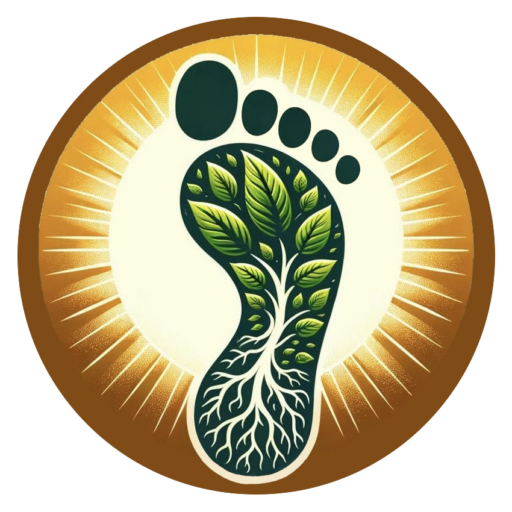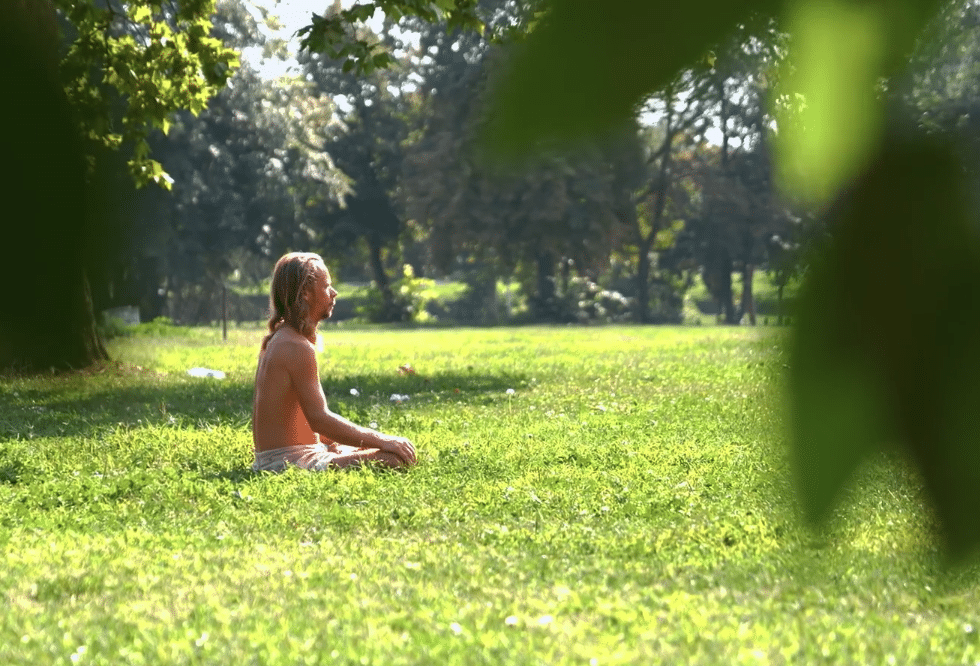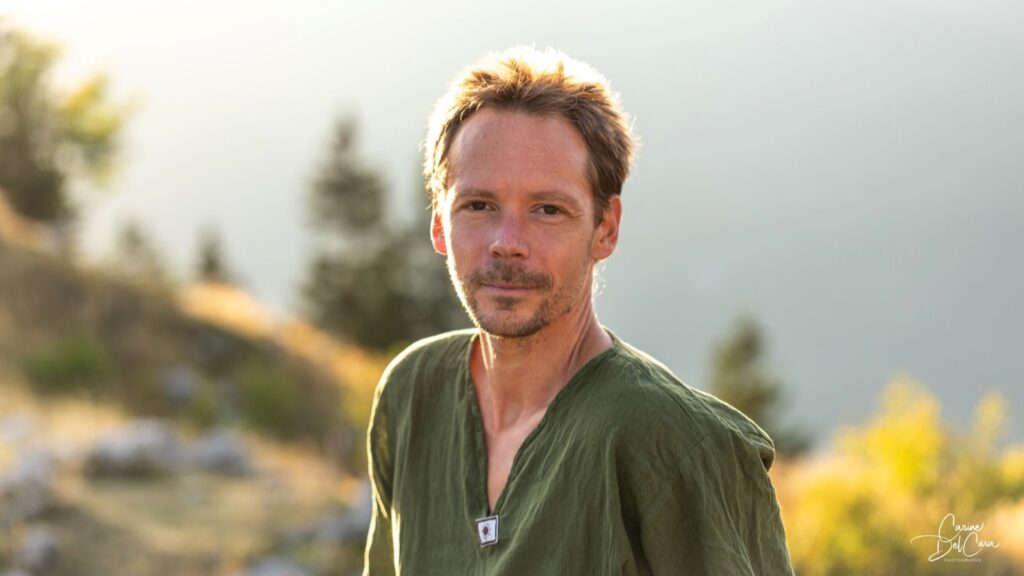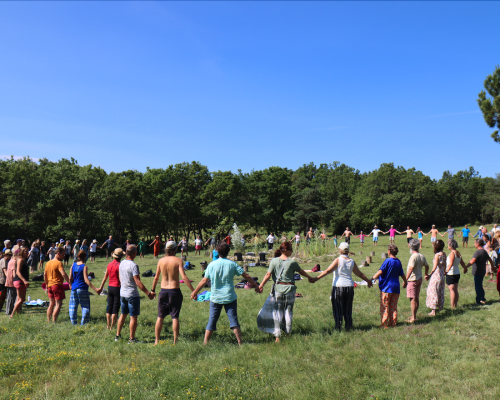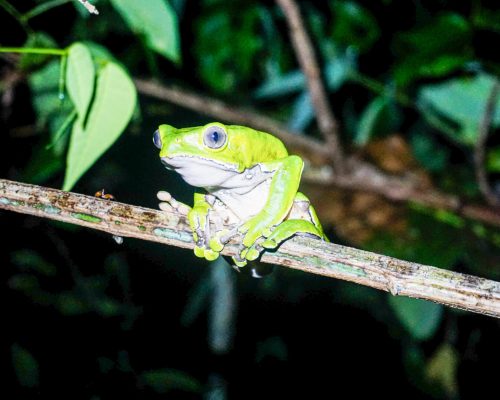One of the most frequent questions I get after the screening of the film The Footprint is: “When you didn’t have enough to eat, why didn’t you gather wild plants to feed yourself?”
I take the time to develop an answer in this article because I believe that often, behind this seemingly innocuous question, lies the belief that we could rely on them to survive… Is that realistic or not?
What parts of plants can we consume?
From spring to the end of summer, all parts of wild plants are potentially nutritious: roots, leaves, flowers, and seeds. But it is especially in spring, when the roots and leaves are tender and green, that we can fully benefit from their nutritional value.
Seeds are the most caloric, and it might be tempting to consume them in large quantities in survival conditions. This is probably a bad idea because seeds, although very rich in nutrients, contain phytates and lectins (among others) whose role is to trap certain minerals (like iron, magnesium, calcium, zinc, etc.) to have them in reserve for the next germination. These molecules, called anti-nutrients, if consumed in large quantities, can disrupt digestion (even causing vomiting or discomfort) by preventing the proper functioning of digestive enzymes and the absorption of nutrients by the intestinal membranes.
Almost everyone knows the sad end of Christopher McCandless, the hero of the film “Into The Wild.” What is less known is that the end of the film, when we are led to believe that Christopher dies after mistakenly eating a toxic plant, is not true to reality. This corresponds to a Hollywood ending and a misleading shortcut compared to the end of his life as reported by his biographer Jon Krakauer in his book “Into the Wild”. According to the author, Christopher was in an advanced state of malnutrition when he consumed a large quantity of seeds that were classified as edible. It was the large amount of anti-nutrients ingested in a malnourished body that caused his demise. A healthy and properly nourished body could have neutralized these substances without risk; Christopher, however, probably no longer had the necessary mineral resources and died of indigestion. By comparison, the alkaloids in a large cup of coffee could have caused his death in the same way. But that might not have been a bankable ending for the film industry, unlike the one chosen, which reinforces our primal fears of nature.
We could therefore consider that anti-nutrients are substances that are also produced by plants to protect themselves from predators. Moreover, we do not have a digestive system adapted to massive consumption of seeds like granivores such as squirrels and certain birds. However, knowing that germination destroys most of these anti-nutrients, seeds can nourish us without drawbacks after germination.
In summary, tubers and seeds are the most caloric and nutritious parts of plants, but they are also the least accessible in space and time. Leaves, although less caloric, are much more accessible while being rich in proteins, minerals, vitamins, enzymes, chlorophyll, and antioxidants.
To what extent can we feed ourselves with wild plants?
The leaves of wild plants contain between 15 (lamb’s lettuce) and 50 (nettle) Kcal per 100g. A human with low daily physical activity expends about 2000 Kcal per day. If they only eat wild plants, they will need to consume at least 4 kilos of plants (eating the most caloric ones) per day. In the context of The Print, with perhaps 3500 Kcal expended per day, that raises the ration to 7 kilos of plants per day…
A mass that should probably be increased in summer when plants become more fibrous and their nutritional value decreases. Furthermore, we must not lose sight of the fact that almost all edible wild plants are medicinal plants (they are called simples) with strong detoxifying power. So I can hardly imagine the purge that consuming several kilos of dandelions would cause in my body, for example… Moreover, I don’t think my body would allow me to consume such a quantity of wild plants because every living plant food we consume produces a sensory stop when we exceed the amounts that the body can assimilate beneficially.
I even think that if I forced myself to consume large quantities of dandelion (or any other edible wild plant), it would eventually make me vomit or cause diarrhea. Not to mention the intense digestive work that this would require.
The qualities of wild plant leaves:
- They contain many active substances that heal and detoxify (expectorant, diuretic, digestive, laxative, anxiolytic, stimulating, antipyretic, anti-inflammatory, etc.).
- They are very rich in proteins, minerals, vitamins, enzymes, chlorophyll, and antioxidants that far exceed (up to 10 times more) all commercially available fruits and vegetables. (Example: I no longer want to consume 3 tablespoons of spirulina per day if I drink the equivalent of a large bowl of wild plants processed in a juicer.)
- They are free and abundant.
While the leaves are nourishing (in micronutrients) and provide healthy fibers for the intestinal microbiota (a healthy microbiota is necessary for good digestion and nutrient absorption), they provide very few carbohydrates compared to sweet fruits or fats compared to oilseeds. We are not like herbivores that have the ability to break down plant cellulose directly into sugars, nor can we consume large quantities of plants to extract sufficient fats.
In a survival context where there are no sweet or fatty fruits, it would be possible to consume, in addition to the leaves, sprouted wild seeds (when in season and taking the time to collect them…) and tubers (edible only in spring, otherwise they are too tough, and taking the time to dig them up). It is in this survival context that cooking plants presents its unique advantage, making plant fibers more tender for chewing and increasing the caloric value of leaves and tubers (because soluble fibers under the effect of heat transform into sugar). Cooking thus allows for the consumption of more plants and extracting more energy from them. The downside of cooking, as we will see a little later, is that it inhibits the sensory stop that is there to prevent us from consuming too many potentially toxic active substances beyond a certain dose. Eating large quantities of cooked leaves can therefore cause food poisoning even if the plant was edible. A problem that does not occur with the same leaves consumed raw because the sensory stop diverts us from the food if it is not compatible with our body.
In summary, we cannot feed ourselves exclusively with wild plants, but we would gain numerous benefits from reintroducing them into our daily diet to be better nourished in micronutrients and to save money. However, the myth that they are dangerous and that one must be a specialist to use them is a barrier to resuming the good habit of gathering plants for sustenance.
Here are three principles that have personally helped me better understand plants and no longer fear them.

Principle #1: When tasting a raw plant food, our taste buds provide us with information about its nutritional qualities.
Here are my beliefs (not proven!) on the subject:
- If the taste is pleasant or attractive, it means the food is compatible (which does not mean “edible”) for us.
- If the taste is neutral, it means our body does not need that food.
- If the taste is strong, acidic, astringent, or bitter, it means the food is detoxifying.
- If the taste is repulsive, it means the food is toxic.
Important note: A plant can smell pleasant (like hemlock) and taste repulsive.
However, the more a person is accustomed to processed food, the more they will have difficulty evaluating the taste information of foods. For example, it is not always easy to distinguish a strong or bitter taste from a toxic taste. That is why plant recognition manuals remain useful, but to a degree proportional to our level of disconnection from natural life.
For me, it is an experimental field to taste the plants classified as “toxic” that I encounter to see the information given to my body when I chew them. What I have observed is that the body spits them out directly without needing to think when they are truly toxic. When they are moderately toxic or have strong medicinal virtues, the taste is not systematically repulsive, but one clearly does not want to eat large quantities of them.
I therefore consider that this principle #1 is true for all wild organisms but partially true for civilized humans because our lifestyle (especially dietary) has somewhat distorted our instinct. Recalibrating one’s instinct is possible as long as one gradually returns to a life more in tune with our physiological needs. This disconnection from the right feeling of what is truly good for us or not is well observed in people accustomed to industrial food who appreciate little or not at all raw fruits and vegetables. Fortunately, this process is reversible without having to force oneself to eat what one does not like. It will be enough, first of all, to focus on the few fruits and vegetables that one likes. Wild animals have read no books, nor do they know their Ayurvedic profile, yet they know what to eat and what to leave aside. To my knowledge, wild animals have never been found dead after mistaking plants or mushrooms, whereas this happens with all farmed animals that, through breeding and genetic selection, have gradually disconnected from their natural instinct and environment, a disconnection exacerbated by an inappropriate diet (grains, pellets, or complementary fats) given to herbivores. This is particularly the case with horses that, when fed animal fats (as was the case in the past), encounter problems with taste and perception. This loss of proper references makes them want to consume yew if it is available, which can lead to their death by poisoning. This is one of the reasons why the vast majority of yew populations have been cut down in Europe.
Moreover, humans share 60% of their genes with bananas as with many plants. This fact, which may seem surprising, highlights that we have co-evolved on Earth with these plant species over tens of millions of years. This certainly partly explains the instinctive ability of the animal world to know what is good for it or not, as if the plant were a part of ourselves. Fortunately, we have not been genetically selected like livestock, and that is why this reconnection to the right feeling is still accessible. Given these observations, the question arises as to whether our feelings can be accurate regarding GMOs…
Principle #2: The notion of taste is subjective and varies over time.
Simply because the notion of gustatory pleasure is information given by our body to guide us towards the foods we need. We do not all like the same things because we simply do not all have the same needs; moreover, these needs vary over time in the same person.
Example 1: If you feel like eating a banana, it is very likely that by responding to that craving, you will find it good. If you eat 10 (for example), the tenth will very likely taste significantly less pleasant than the first because your body, having filled up for the day with what it needs from the banana, cuts off your desire to eat more. This is what is called instinctive stop or sensory stop. This is sometimes very marked, as with pineapple, which eventually causes bleeding in the mouth if you try to consume it beyond the sensory stop.
Example 2: If you taste a plant classified as toxic (e.g., foxglove), it may be that, contrary to principle #1, you do not find it repulsive in taste in small quantities. Simply because it is a medicinal plant and its active principles only manifest beyond a certain dose (about ten leaves in the case of foxglove). Whereas for other plants classified as toxic (e.g., hemlock), the sensory stop occurs from the first chew.
The confusion is perpetuated by the classification of plants as “toxic” that almost all (if not all) have powerful medicinal virtues. In reality, every plant is toxic beyond a certain dose. Because it is always the dose that makes the poison. And only our instinct, via the sensory system, can tell us what is good for us or not and in what quantity. What is interesting to observe is that the emblems, whose mere mention makes many people shudder, of toxic plants and mushrooms are, respectively, hemlock (because it visually resembles wild carrot) and the fly agaric. Yet, if we look closely, hemlock can be used in homeopathy and as a poultice, while the fly agaric is actually a psychedelic used since ancient times across much of the planet. The label “toxic” or even “deadly” attached to a plant (or mushroom) simply indicates that the species contains very powerful active principles and that it should be handled with caution. Only competent herbalists, druids, shamans, or alchemists are able to use them wisely.
In absolute terms, if we had always had a hygienic life and diet, we would have nothing to fear (like wild animals) from plants classified as “toxic” because we would be fully connected to our environment and would instinctively know what is good for us or not. Nowadays, I believe that the best way to reconnect with the plant people is to adopt a lifestyle as natural as possible and to help our body detoxify from harmful substances that alter our feelings. Without this “hygienist” process, an accident like an allergy is always possible, even with harmless foods like a carrot, pollen, or a banana.
For humans in the 21st century, there is always a risk in consuming wild plants, but this risk is no higher than the risk of having an allergy to a commercial fruit. Moreover, the fear of toxic plants should be put into perspective in Europe, compared to the rest of the world, where we do not have highly toxic plants like those found in the Amazon. There, simply tasting certain toxic plants can have harmful consequences.
Accidents with wild plants often occur when we make mixtures or when we cook them because the body no longer senses the active principles very well. That is why it is always preferable to consume plants raw (if only to not waste their nutritional properties) after ensuring that they are all edible. For this, plant recognition applications on phones like “PlantNet” are very useful.

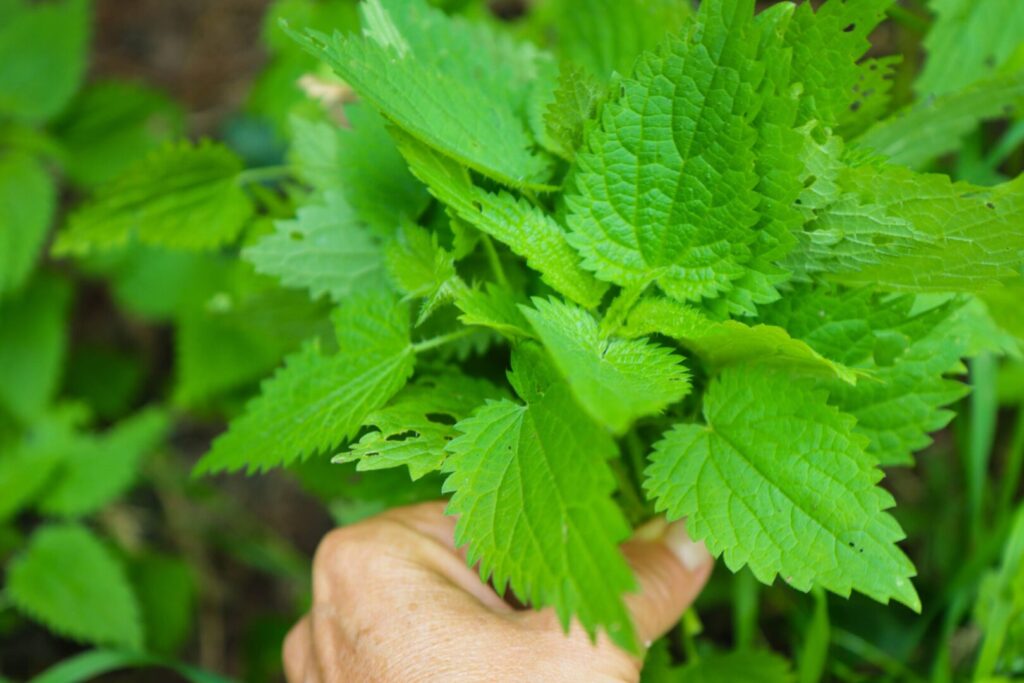
Principle 3: A molecule deemed “toxic” when taken alone can have a neutral or even beneficial action within a synergy.
That is why pointing out a toxic substance in a plant does not presuppose the toxicity of that plant. Plants are full of one or several hundred molecules that have complex interactions with each other, which is why it is very difficult (if not impossible) to understand all the effects of a plant on an organism. Note that the active substances of plants do not act like medications by suppressing symptoms but by supporting the body in its natural healing processes.
Example 1: Fructose taken in isolation (in the form of corn syrup, for example) is a poison for the liver. Whereas fructose from fruits, taken in its context, with water, fibers, and certain molecules that warn the liver of the imminent arrival of fructose, is perfectly compatible with our body.
Example 2: Comfrey, an essential plant in gardens with a millennia-old use, is suspected of being dangerous internally because it contains potentially harmful alkaloids found in the green parts of potatoes and tomatoes, for example. However, comfrey leaves (which I have consumed in large quantities for 6 months of the year, without issue) have a very pleasant taste reminiscent of cucumber. In light of these doubts, it is legitimate to ask the following questions:
- Are the alkaloids contained in comfrey dangerous when taken in isolation, or are they dangerous even within the synergy of molecules contained in the plant?
- Is this plant not toxic like all other plants since it is the dose that makes the poison?
- Is it not enough to listen to your sensory feelings to avoid exceeding this dose?
All these open questions obviously presuppose that we consume these leaves raw and without mixing them too much with other foods, otherwise the sensory stop will not manifest properly.
Purgative plants
Another principle adds an additional degree of complexity: the existence of purgative plants that can have a pleasant taste. You want to eat them, but they make you sick, leading you to conclude that it was actually a toxic plant. If your body is healthy enough, this gives you the opportunity to eliminate toxins through diarrhea or vomiting, as seen in animals. If you are too weakened by an inappropriate lifestyle, this can be dangerous for you. Especially if you have cooked them and consumed large quantities. This does not mean that the plant is bad in itself; it just means we need to relearn how to use them consciously. The wild world is not a fairy tale, but it is not hostile either, as it is what gave us life.
In survival conditions
Imagine you are in the forest under survival conditions and you only have plants to eat. You don’t know much about it. There are edible plants, purgative plants, and “toxic” ones. Moreover, you fear a possible allergy. How will you survive?
- 1) Choose a plant that attracts you and smells good.
- 2) Crush its sap on your skin at the elbow crease.
- 3) Wait 2 hours. If redness or irritation appears: do not consume the plant. Otherwise:
- 4) Taste the plant by chewing it well and then spit it out. If a burning or numbness sensation appears on the tongue: do not consume the plant. Otherwise:
- 5) Consume a few leaves and then wait 2 hours. If unpleasant symptoms appear (palpitations, fever, dizziness, etc.): do not consume this plant anymore. Otherwise:
- 6) You can consume this plant as long as you want (taste-wise).
Two easily recognizable and very nutritious stars among the simples
I chose to highlight dandelion and nettle because they are two plants that have colonized all emerged lands, are delicious, abundant for a good part of the year, and easily recognizable.
The dandelion
Traditional medicine once recommended the consumption of dandelion for lack of appetite and chronic liver conditions. The whole plant is also used for its diuretic, depurative, and cholagogue properties (which facilitate the evacuation of bile to the intestine).
It is a very good source of:
- Beta-carotene
- Vitamins B1, B2, B9, and C
- Iron, potassium, calcium, and chlorophyll
Its nutritional interest is close to that of spinach.
The nettle
According to Wikipedia, nettle is said to be diuretic, depurative, anti-rheumatic, anti-inflammatory, analgesic, antimicrobial, anti-ulcer, anti-anemic, hepatoprotective, antioxidant, hypoglycemic, anti-allergic, immunostimulant, hypotensive, tonic, and galactagogue.
It is particularly indicated in cases of depression and for better blood and a stronger skeleton. It is one of the most nourishing with its 8g/100g of protein (including 8 essential amino acids) and its richness in:
- Beta-carotene
- Vitamins B, C (6 times more than orange), and E
- Iron, calcium, phosphorus, magnesium, potassium, silica, and chlorophyll
An interesting site to learn more about the nutritional elements of wild plants: http://www.gourmandises-sauvages.com/site/la-nutrition-dans-la-nature-grace-aux-plantes-sauvages-comestibles/ (this link leads to a website in French. To read it in English or another language, simply copy the URL and paste it into Google Translate https://translate.google.com/?sl=fr&tl=it&op=translate).
My advice
Go into nature with your smartphone to take photos of wild plants and learn to recognize them. Botanical will then provide you with plenty of useful information to know the properties of the plant you photographed. Once you have ensured it is edible, eat it raw or pass it through a juicer, possibly with other fruits and vegetables, to enjoy all its benefits and fill any potential deficiencies ! All for free and while spending time in nature, this immense playground and exploration area where our soul and body will also nourish themselves on subtle levels within a reconnection with the living.
And finally, to answer the question posed at the beginning of this article: During The Footprint, when I was hungry, I consumed a few wild plants, but that was not what attracted me the most because I mainly needed energy, and it was not the greenery that would have prevented me from tapping into my fat reserves. More than the minerals from the leaves, it was mainly the sugar from the fruits that I was looking for.


